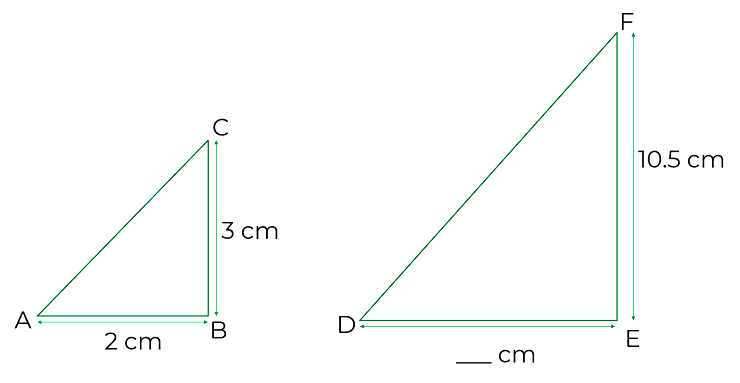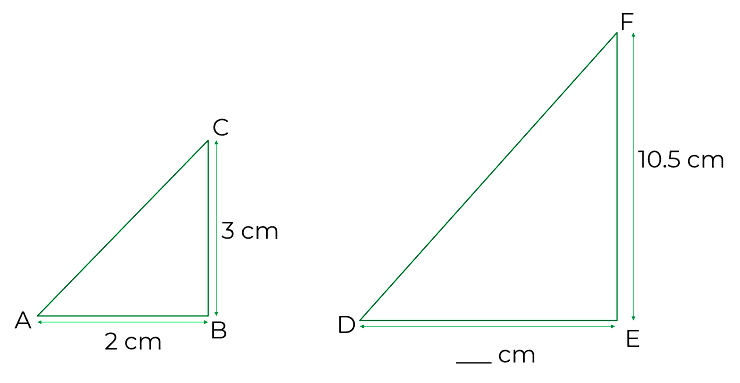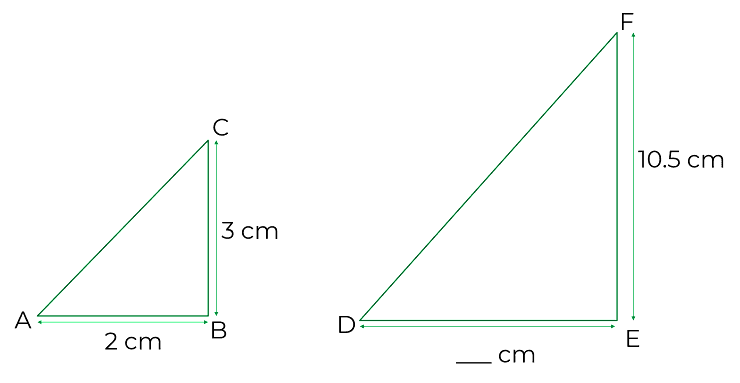Year 8
These resources will be removed by end of Summer Term 2025.
Switch to our new teaching resources now - designed by teachers and leading subject experts, and tested in classrooms.
These resources were created for remote use during the pandemic and are not designed for classroom teaching.
Lesson details
Key learning points
- In this lesson, we will understand how to use double number lines to represent proportion problems.
Licence
This content is made available by Oak National Academy Limited and its partners and licensed under Oak’s terms & conditions (Collection 1), except where otherwise stated.
5 Questions
Q1.
Fill in the gap: the diagram shows a triangle that has been _________ by a scale factor of 3.5.

bigger
proportionality
ratio
Q2.
Fill in the gap: the ratio between the side lengths AB and BC is 2 : ____.

10.5
2
ratio
Q3.
Fill in the gaps: The _______ between the side length DE and EF is also 2 : ___.

proportionality, 10.5
proportionality, 3
ratio, 10.5
Q4.
Fill in the gap: The constant of _________ between the two triangles is 3.5.

bigger
enlargement
ratio
Q5.
What is the length of DE?

6cm
70cm
9.5cm
5 Questions
Q1.
If a double number line starts with 4 on the top and 3 on the bottom, what will be the first number that appears both above and below the lines?
18
24
9
Q2.
On a double number line, 10 is above the line and 40 is below the line. What is the constant of proportionality?
1
10
40
Q3.
On a double number line, 4 is above the line and 4.8 is below the line. What is the constant of proportionality?
0.8
4
4.8
Q4.
What is the missing number (indicated by the empty box) on this number line?

0.6
16
8
Q5.
What is the constant of proportionality for this number line?

0.6
16
8

